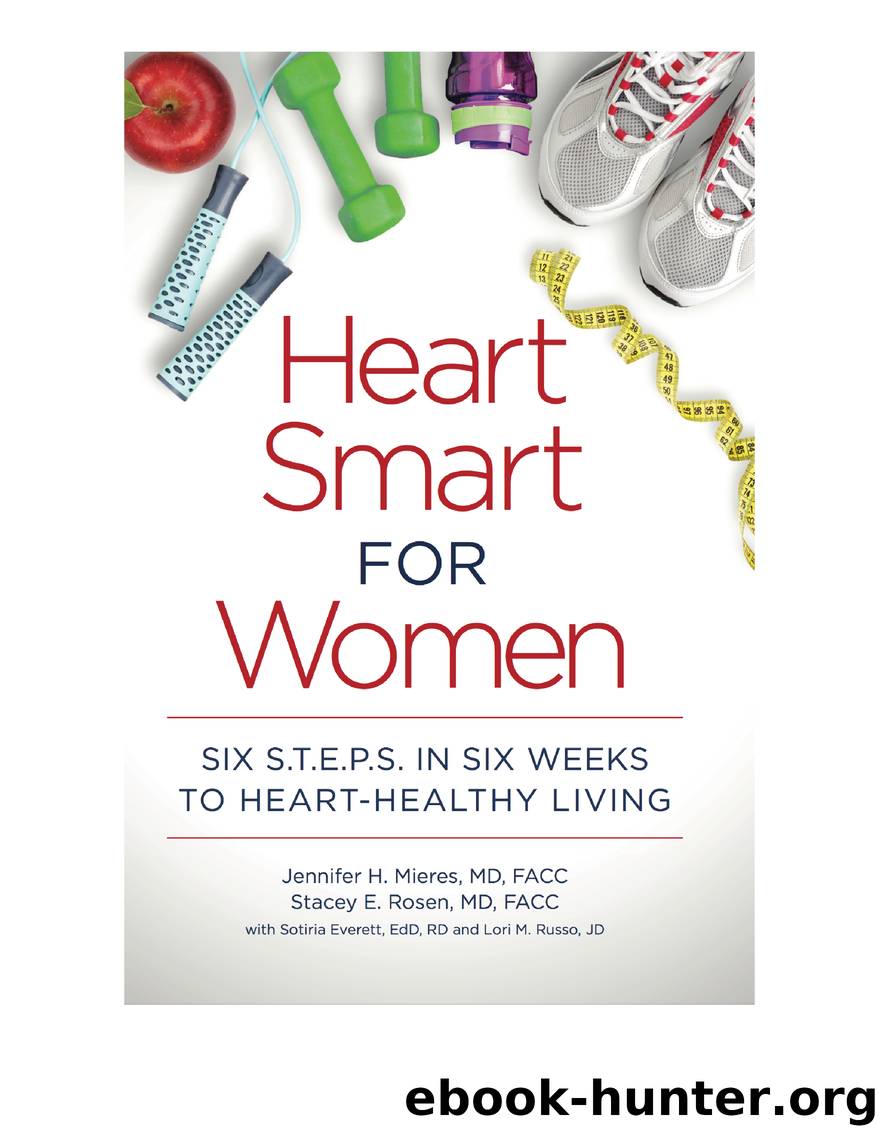Heart Smart for Women by Jennifer Mieres MD

Author:Jennifer Mieres, MD
Language: eng
Format: epub
Publisher: Onward Publishing
Published: 2018-02-08T20:46:04+00:00
5. Cut the Salt, Sugar and Saturated Fat
Salt is a major cause of high blood pressure and other related heart diseases. We now know that cutting salt in the diet reduces the risk of heart attacks and stroke. This is yet another reason to eliminate processed foods, because one of their major ingredients is what is referred to as hidden salt. Over 80 percent of salt intake is from processed foods. The American Heart Association encourages shoppers to become salt detectives by reading labels and only eating foods with 140 milligrams or less of sodium per serving, and we agree!
Tips for cutting salt:
Eat only canned, frozen or other types of processed foods labeled âreduced sodium,â âsodium-free,â âno salt addedâ or âunsalted.â
Eat only foods with total sodium content of 140 mg or less per serving, if you canât get salt-free. Note that sodium may also be listed as MSG (monosodium glutamate).
Eat steamed, grilled, baked, boiled and broiled foods and keep sauces, dressings and cheese âon the side.â Be sure to make this request when ordering out.
Eat high-sodium condiments sparingly. These include soy, steak and Worcestershire sauces, flavored seasoning salts, pickles, olives, anchovies, sauerkraut and salted tomato and vegetable juices.
Season food with pepper, garlic, lemon or herbs and spices instead of salt. Salt-free seasonings are fine, but some seasoning blends do contain salt, MSG or salt products, so read the label.
Check the hot sauce label. The original red tabasco sauce is low in sodium, but many hot sauces are not.
Rinse canned meats, vegetables, beans and capers well in plain water to remove some of the sodium.
Limit or eliminate consumption of cured meats, bacon, hot dogs, sausage, bologna, ham, salami, salted nuts and cheeses.
Use margarine in moderation, because even though it contains less saturated fat than butter and no cholesterol, one tablespoon still averages about 150 mg of sodium.
Download
This site does not store any files on its server. We only index and link to content provided by other sites. Please contact the content providers to delete copyright contents if any and email us, we'll remove relevant links or contents immediately.
Men In Love by Nancy Friday(5140)
Everything Happens for a Reason by Kate Bowler(4660)
The Immortal Life of Henrietta Lacks by Rebecca Skloot(4505)
Why We Sleep by Matthew Walker(4343)
The Sports Rules Book by Human Kinetics(4272)
Not a Diet Book by James Smith(3323)
The Emperor of All Maladies: A Biography of Cancer by Siddhartha Mukherjee(3044)
Sapiens and Homo Deus by Yuval Noah Harari(2970)
Day by Elie Wiesel(2707)
Angels in America by Tony Kushner(2546)
A Burst of Light by Audre Lorde(2505)
Endless Forms Most Beautiful by Sean B. Carroll(2418)
Hashimoto's Protocol by Izabella Wentz PharmD(2315)
Dirty Genes by Ben Lynch(2266)
Reservoir 13 by Jon McGregor(2228)
Wonder by R J Palacio(2121)
And the Band Played On by Randy Shilts(2116)
The Immune System Recovery Plan by Susan Blum(2014)
Stretching to Stay Young by Jessica Matthews(1993)
